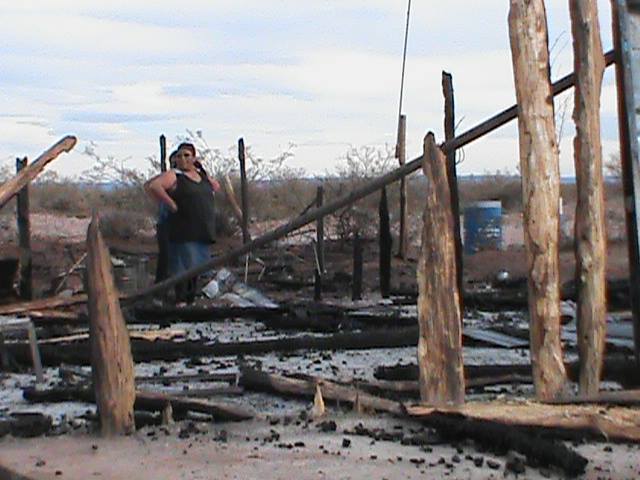Nathanial Gronewold, E&E reporter
Published: Thursday, September 5, 2013
HOUSTON — The federal government is racing to roll out a new mapping
tool that it hopes will lead to a truce between offshore drillers and
fishing interests over the spike in rig decommissioning and tear-downs.
The Bureau of Safety and Environmental Enforcement hopes by the end of
this month to have the basic framework for a geographic information
system mapping tool that would be used to track the life span of the
thousands of offshore structures and platforms standing in the Gulf of
Mexico, hundreds of which are slated for removal. But finalizing it
will take many more months or even years and will require the input of
charter fishermen, recreational diving companies, shrimp boat captains
and anyone else who has a stake in the Gulf’s natural resources.
The aim is to defuse the tension between charter fishermen and divers,
who depend on the artificial reef environments created by the rigs for
their livelihood, and the very owners of those offshore structures, who
are legally required to remove them when they are no longer in use. Rig
owners also fear the legal liability they are exposed to should a
defunct rig cause an accident or suffer storm damage.
In an interview, David Smith, a public affairs specialist at BSEE, said
the map that he and his team hope to complete this month will just be a
bare-bones version of the final product. The ultimate aim, he said, is
to develop a tool that enables all interested parties to know ahead of
time when a rig might be coming down and whether that structure would
be a good candidate for the federal Rigs to Reefs program.
BSEE sees Rigs to Reefs as the key to bridging the divide between the
fishermen and offshore oil and gas companies. Charter fishing interests
have been lobbying hard in Congress for a temporary moratorium on rig
decommissioning and removal, something that oil and gas companies and
the decommissioning industry are eager to avoid.
“You have the older platforms that have created this temporary
artificial habitat for fish and other marine life, but they’re also the
ones that are probably going to come out the soonest,” Smith explained.
“What we found is that there needs to be a lot more collaboration in
the planning process for decommissioning.”
Although the platforms, caissons and other offshore structures are the
private property of oil and gas companies, commercial and charter
fishermen insist that their voices should be added to the discussion on
what to do with an aging offshore structure. At the same time they and
some state agencies complain that the Rigs to Reefs program is too slow
and laden with bureaucracy. Six federal agencies have some say in what
happens to a structure resting above an abandoned offshore well.
Capt. Gary Jarvis, former president of the Corpus Christi, Texas-based
Charter Fishermen’s Association (CFA), expressed some skepticism that
BSEE’s planned reforms of Rigs to Reefs will work, but he is satisfied
that at least BSEE is hearing his industry’s concerns.
Still, he and others feel that nearly all offshore structures should be
reefed in place after they are no longer of use to the industry. That
currently happens with only a small fraction of them.
“Ideally for us, we would say reef them right where they’re at,” Jarvis
said. “That would be a good compromise.”
Delicate balancing act
Once the GIS map is in place, Smith said he hopes to organize a cross-
industry commission to help manage it and keep it updated.
Representatives of charter fishing and dive trip operators could
identify which structures are of most value to them, and oil and gas
interests across the table could provide updates on the status of these
structures, notifying whether they plan to tear them down and how
quickly.
Representatives of Gulf state agencies that assume responsibility for
artificial reefs created in Rigs to Reefs would also be at the table to
give guidance on whether these structures can be folded into the
program. Not all are eligible to become artificial reefs.
“We’re trying to develop a GIS map as a planning tool, and then we want
to develop a collaborative planning body that will sort of be an
information repository and facilitate a dialogue,” Smith said.
It’s a delicate balancing act that will attempt, for the first time, to
bring all Gulf of Mexico commercial interests — fishing, recreation,
and oil and gas — together to hash out compromises over their
competing needs.
Though charter fishermen may want to keep all structures in place,
shrimp boat captains by and large would like to see all those defunct
platforms removed to avoid damaging their equipment. Oil and gas firms
are keen to rid themselves of liability for these defunct platforms as
soon as possible. Meanwhile, thousands of workers are employed in the
Gulf Coast region by companies that tear down platforms and salvage the
“idle iron” for scrap metal.
The committee or planning commission that he hopes to form would “take
all of the input from the shrimping community, from the trawlers, from
the fishing and recreational charters, commercial diving community, all
of those different organizations and bring it all together, and then
have regular update meetings and have a place where people can come and
talk about what’s working and what’s not,” Smith said.
Complicating matters further, the science surrounding artificial
reefing is still in its infancy. The ecological benefits of artificial
versus natural reefs is still hotly debated and will be the principal
topic of discussion at the forthcoming Gulf and Caribbean Fisheries
Institute conference in Corpus Christi, Texas, slated for November.
Wes Tunnell, associate director of the Harte Research Institute at
Texas A&M University, Corpus Christi, explained that the current debate
swirls around whether artificial reefs generate new populations of fish
species or simply concentrate existing ones. He said there is evidence
for both.
Gulf of Mexico researchers are also still trying to develop a sound,
standardized technique for studying and monitoring artificial reefs,
counting the populations of fish that call them home and comparing this
data with what researchers collect at natural reef sites. “There’s
never been a really good way to count the fish around these artificial
reefs and have kind of an objective method for doing that,” Tunnell
said.
But there is some general understanding of artificial reefs among the
scientific community. Tunnell indicated that there’s evidence to
suggest that, though natural reefs are more biodiverse, artificial
reefs may actually harbor larger numbers of fish and therefore might be
more productive for fisheries.
Harte and other research centers are willing to aid BSEE’s efforts to
reach a general compromise, but Tunnell said his institute’s position
on the decommissioning and Rigs to Reefs controversy will be strictly
neutral.
“We like to be what we call the honest broker,” he said. “We want to
keep providing the best information until we get to the right
solution.”
Hurricane’s wake
The hurricane seasons of 2005 to 2008 brought this issue to the fore.
Hundreds of platforms were damaged or destroyed by Hurricanes Katrina,
Rita, Gustav and Ike. In investigating the problem, BSEE discovered
that more than half of the damaged structures were in disuse, sitting
abandoned for years. Fixing the damage cost hundreds of millions of
dollars.
The 2010 Macondo well blowout and oil spill delayed action somewhat,
but after the dust settled from that incident, BSEE issued a notice to
oil and gas companies reminding them that they need to demonstrate a
plan for what they intend to do with abandoned platforms within five
years. The options include selling them to other companies, reusing
them for developing new wells, reefing or removal.
Smith is adamant that the Notice to Lessees issued in October 2010 was
not a directive that companies must remove abandoned structures.
Rather, the notice was meant to remind industry of the existing
regulations in place.
Smith estimated that the Gulf is home to nearly 2,900 production
platforms, but he stressed that, of these, 700 to 800 may have to be
dealt with as they near the end of their life spans. And even then the
law doesn’t require that they be removed, only that the owners come up
with a plan for what to do with them next.
Still, many in the industry acted as if the NTL was ordering immediate
compliance.
BSEE estimates that 285 structures were removed from the Gulf in 2011,
up from 153 in 2008. Permit requests for rig decommissionings rose from
254 submitted in 2010 to 319 in 2011. Fishermen and divers grew alarmed
as hundreds of platforms were pulled, mostly from the western Gulf off
the coast of Texas. Structures that they’ve depended on for years
seemingly vanished overnight.
“Especially off South Texas where we are, we’ve just had so few rigs so
when they pulled out 30 or however many there were in our region, the
fishermen and the diving industry, they felt that tremendously,” said
Jennifer Wetz, a researcher at the Harte Institute. “That was huge to
them.”
The Charter Fishermen’s Association and other groups and individual
fishermen responded by getting politically active, pressing their local
members of Congress to get involved. Last year lawmakers proposed the
decommissioning moratorium. Although that effort failed, the speed and
strength with which fishing and diving interests acted got the
attention of offshore oil and gas firms. The dispute was a top item for
discussion among industry representatives at the Decommissioning and
Abandonment Summit held in Houston earlier this year.
J. Dale Shively, artificial reef program leader at the Texas Parks and
Wildlife Department, expressed sympathy for the fishing interests but
suggested they should have seen this problem coming. Offshore platforms
are meant to be temporary installations with their owners free to do
with them as they wish, as long as it complies with the law.
“One of the sticking points really is that the public doesn’t accept
that these platforms are private property,” Shively said. “They don’t
belong to the public. They don’t belong to the federal government or
the state. They belong to the oil company.”
CFA member Jarvis, however, argues that these structures become far
more than just a matter for the private owner because they create
valuable fish habitat, an asset that is tightly controlled throughout
the Gulf. Simply removing them when the companies want to would destroy
that habitat and the fish that reside there, an action that would
result in severe consequences for fishing interests but almost none for
oil and gas firms, he said.
“There are all kinds of federal laws and regulations about live coral,
and there’s nothing on those oil rig legs but live coral. They get a
free pass on that,” Jarvis said. “The fishing reefs, also known as oil
rigs, are a valuable asset to the fishery, not only from the
fisherman’s perspective but from the fish perspective too.”
Challenges
Shively agrees with BSEE that the Rigs to Reefs program will be a
central factor to satisfying all sides of the issue, but he complained
that for a while now the program allowed too little flexibility for
state agencies like his to grab structures before they are removed and
recommend them for reefing.
He also echoed Tunnell’s point that the science of artificial reefing
is still being worked out. Texas Parks and Wildlife is relying on
researchers at the Harte Institute; University of Texas, Brownsville;
and Texas A&M University, Galveston, for help in studying Texas’ three
primary artificial reef areas. Getting a fix on the value and proper
management of the Rigs to Reefs program is a never-ending challenge, he
said.
“We don’t ever predict that we’re done,” Shively said. “We put
materials down that are serving as a reef, but the scientific questions
are if you put more material, do you get more fish, or do you at some
point get all this competition and the population decreases because now
you’re bringing in more predators?”
Another challenge is the expense. Shively estimates that a typical
reefing job costs more than $500,000. A near-shore artificial reef he’s
working to put together this month near Corpus Christi using more than
400 concrete pillars will run about $700,000. Another near Matagorda,
spread across 160 acres, will probably cost $1.2 million to complete,
he said.
“Every reefing job is expensive,” Shively said. “We’re hoping to get
some of this Deepwater Horizon money to help with it. It’s in the
plans, but we haven’t gotten official approval yet.”
Though reefing can save an operator potentially millions of dollars,
the time-consuming and cumbersome process — and restrictions on where
and how rigs can be reefed — means that far more concrete and steel
will still be removed than left in the Gulf of Mexico. Last year BSEE
reported that the oil and gas industry requested approval to scrap
about 330 offshore structures. Twenty-seven were recommended for the
Rigs to Reefs program, or about 8 percent of the total. So far this
year the agency has received permit applications to scrap 121 rigs and
to reef 15.
The GIS mapping system that BSEE will try to roll out later this month
will be the beginning of attempts to bring more structure and order to
the Rigs to Reefs program and to provide fishermen and divers with
enough information so that they can know precisely what’s happening
with their favorite reefs. If such a structure is scheduled for
decommissioning, fishing and diving interests would be able to flag it
to state officials or BSEE for possible inclusion in Rigs to Reefs. If
popular structures are deemed unsuitable for reefing, then the divers
and fishers can at least learn of this ahead of time, giving them an
opportunity to seek out replacements to visit to keep their businesses
going.
Smith said he needs the cooperation of all sides to make the experiment
work.
“In order to get the map to work, we have to get all the BSEE data on
it, we need to get all the shrimping data on it, we need to get all the
fishing data on it,” he said. “It would help if the fishing and diving
community could point out those platforms that are really important to
them and make the states aware of those so that the states know where
to look for them.”
Though he thinks it’s been taking BSEE too long to put this mapping
tool together, Smith believes this step will prove to be the easy part
of this entire effort.
“The hard part is coming up with some sort of cooperative agreement or
something for a body to put all this stuff together,” he said. “I’m not
sure exactly how that’s going to happen yet. We’re still working on
that part.”
Special thanks to Richard Charter


